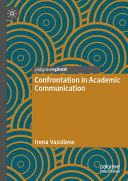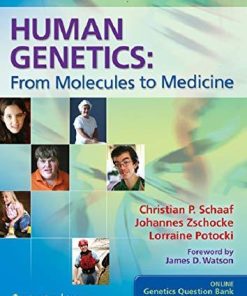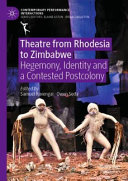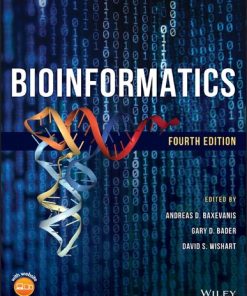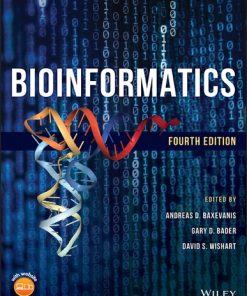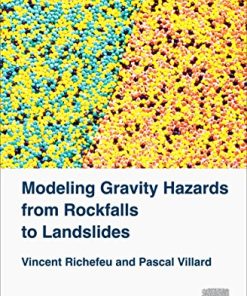From Globular Proteins to Amyloids 1st Edition by Irena Roterman Konieczna 0081029810 9780081029824
$50.00 Original price was: $50.00.$25.00Current price is: $25.00.
From Globular Proteins to Amyloids 1st Edition by Irena Roterman-Konieczna – Ebook PDF Instant Download/DeliveryISBN: 0081029810, 9780081029824
Full download From Globular Proteins to Amyloids 1st Edition after payment.
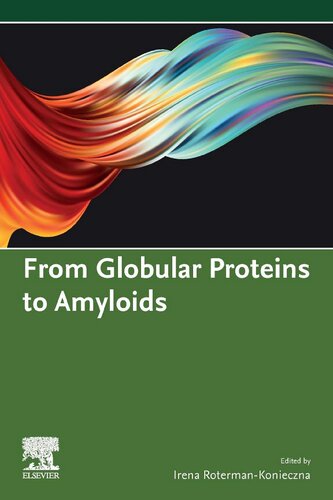
Product details:
ISBN-10 : 0081029810
ISBN-13 : 9780081029824
Author: Irena Roterman-Konieczna
From Globular Proteins to Amyloids proposes a model and mechanism for explaining protein misfolding. Concepts presented are based on a model originally intended to show how proteins attain their native conformations. This model is quantitative in nature and founded upon arguments derived from information theory. It facilitates prediction and simulation of the amyloid fibrillation process, also identifying the progressive changes that occur in native proteins that lead to the emergence of amyloid aggregations.
From Globular Proteins to Amyloids 1st Table of contents:
Chapter 1. Description of the fuzzy oil drop model
Amyloids as seen from the perspective of the FOD model
Chapter 2. Folding with active participation of water
Chapter 3. Information encoded in protein structure
Chapter 4. Globular or ribbon-like micelle
Effect of the aqueous environment on intramolecular processes
The effect of proteins influence on the water structuralization
Amyloid structures
The protein is an intelligent micelle
Chapter 5. Proteins structured as spherical micelles
Type III antifreeze proteins
Titin
Ultrafast-folding proteins
Stabilization in the presence of disulfide bonds
Proteins consistent with the theoretical model—spherical micelles
Counter-example—prefoldin
Chapter 6. Local discordance
Chapter 6.A. The active site in a single-chain enzyme
Lysozyme
Ribonuclease
Chapter 6.B. Protein-protein interaction encoded as an exposure of hydrophobic residues on the surface
Individual chains
DNA binding
CHAPTER 6.C. Ligand binding cavity encoded as a local hydrophobicity deficiency
Chapter 7. Solenoid – An amyloid under control
Antifreeze proteins represented by protein extracted from Flavobacterum frigoris PS1 found in the Antarctic region
Lyase family represented by pectate lyase
“Perfect” solenoid
Flattened double-walled solenoid
Conclusions and discussion
Chapter 8. Composite structures
Single-chian enzyme consisting of three domains
Homodimer enzyme
Conclusions and discussion
Chapter 9. Non-amyloid structure of the Aβ(1–42) polypeptide in presence of a permanent chaperone
Chapter 9.A. Complexes Aβ(1–42) polypeptide with non-protein molecules
Structural characteristics of Aβ(1–42) fragments in complex with selected compounds
Assessment of the hydrophobic core structure in non-amyloid forms of Aβ(1–42)
Conclusions and discussion
Chapter 9.B. Structure of selected fragments of Aβ(1–42) in complex with other proteins
Non-amyloid conformations of Aβ(1–42) fragments
Aβ(17–27) and Aβ(16–28) in complex with lipocain
Aβ(16–40) in complex with phage-display selected affibody protein Z(Aβ3)
Aβ(1–40) in complex with polyphenol ε-viniferin glucoside (EVG)
Aβ(1–21) in complex with the JEF ligand
Aβ(18–41) fragment inserted as the antigen receptor variable domain in shark immunoglobulin
Discussion and conclusions
Chapter 10. Amyloids identification based on fuzzy oil drop model
Chapter 10.A. Amyloid as a ribbon-like micelle
Amyloid Aβ(1–40) peptide with the Osaka mutation (E22Δ)
Aβ(11–42) amyloid
Prion amyloid
In silico experiment
Chapter 10.B. Analysis of alternative conformations of the Aβ(1–40) amyloid protein
Alternative structural forms of polypeptide Aβ(1–40) polypeptide which includes the Osaka mutation
Values of RD and correlation coefficients may be calculated for the entire protein (polypeptide), but also for selected fragments. In the latter case, the process tells us whether the given fragment contributes to the creation of a hydrophobic core or opposes it
Comparative analysis of protein structures generated using folding simulation software
Chapter 10.C. Specificity of amino acid sequence and its role in secondary and supersecondary structure generation
Short fragments of polypeptide playing the ole of linkers between β-strands belonging to β-sheets
Alternative structures solve the problem of minimization of the hydrophobic area on the surface generating the ribbon-like structural forms
Chapter 11. Anti-amyloid drug design
Chapter 12. The hypothetical amyloid transformation of transthyretin
Summary: Protein is an intelligent micelle
Influence of protein on water environment
Influence of water environment on amyloid transformation
Protein is an intelligent micelle
People also search for From Globular Proteins to Amyloids 1st
a globular protein
where is globular protein found
a globular domain is an example of
a globular protein that is ordinarily found in aqueous
a globular protein denatures when its internal
Tags: From Globular, Proteins, Amyloids, Irena Roterman Konieczna
You may also like…
Medicine - Neurology
Neuroscience for Neurosurgeons 1st Edition by Farhana Akter 1108918468 9781108918466
Science (General)
Proteins: Sustainable Source, Processing and Applications 1st Edition
Uncategorized
Total Chemical Synthesis of Proteins 1st Edition by Ashraf Brik 3527823581 9783527823581
Uncategorized
Uncategorized
Uncategorized
Theatre from Rhodesia to Zimbabwe 1st Edition by Samuel Ravengai 3030745945 9783030745943
Biology and other natural sciences - Molecular
Bioinformatics: A Practical Guide to the Analysis of Genes and Proteins 4th Edition
Biology and other natural sciences - Molecular






